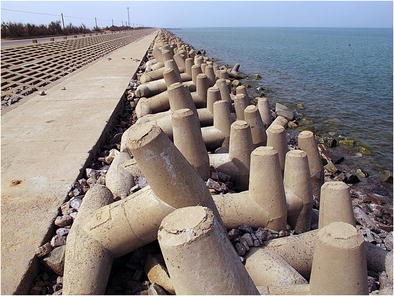The Definitive Guide to Shore Protect Team
Table of Contents8 Easy Facts About Shore Protect Team DescribedGetting The Shore Protect Team To WorkThe Shore Protect Team StatementsIndicators on Shore Protect Team You Should KnowThings about Shore Protect TeamFascination About Shore Protect TeamThe smart Trick of Shore Protect Team That Nobody is Discussing
Decrease in property value: As the location tourism is impacted by erosion, so after that is the economic climate. Customers are much less most likely to search for a beach home that could be ruined anytime by the approaching flooding and disintegration emergency situation. Consequently, residential property worth can drop tremendously and influence the whole area.Whether a coastline is just small and crowded or needs to shut entirely for the safety of the ecological community and nearby buildings, this significantly impacts tourism. Consequently, neighborhood economies are affected (https://www.cleansway.com/katy/business/shore-protect-team). Danger of injury: The enhanced risk of flooding and architectural failings creates a boosted risk of injury to close-by visitors and community members

is home to more than 84,240 miles of shoreline with 41% of it subjected to the open ocean. Coastal engineers supervise of securing the coastline against modifications by minimizing the damaging influences of both natural and manufactured occurrences. Shoreline stabilization is straight pertaining to their job. Waterfront resorts: Because shoreline disintegration influences tourist, it affects the success of beachfront resorts.
A Biased View of Shore Protect Team
Coastal industrial businesses: No vacationers implies no business. Coastal state parks: State parks that exist along shorelines are at risk of damages.
Tough stabilization uses manufactured frameworks as security to control erosion. Many kinds of difficult stablizing like seawalls and sheet steel are not perfect for coastline stabilization.
Get This Report on Shore Protect Team
There's likewise not enough proof of their performance depending upon the sort of shoreline and local conditions. Difficult stabilization methods have a tendency to be harder to set up and don't match the all-natural aesthetic, protruding like a sore thumb and hurting local communities in many circumstances. Beach nourishment is the procedure of including lost sand and debris back to beaches after disintegration has taken place.
TrapBags help in the process of coastline nutrients by safeguarding all-natural environments and allowing plants to expand. While this process can be pricey and is not long-term, the pros tend to surpass the cons. TrapBag obstacles deal numerous residential properties that make them optimal for seaside and shore disintegration protection. They're: Eco-friendly: You can use native soil both to border and to fill up the TrapBags.

A Biased View of Shore Protect Team
Easy to install: Relieve of installation indicates TrapBags can be released rapidly in the occasion of an emergency situation. They can likewise be mounted with no hefty equipment. Budget-friendly: TrapBags are optimal for both tiny and huge locations of coastline. They give a budget-friendly remedy to cover projects of any dimension.
The ideal seawall design counts on location-specific aspects, consisting of bordering erosion processes. There are 3 main kinds of seawalls: upright, curved, tipped, and mounds (see table below). A report released by the United Nations Setting Program (UNEP) recommends that the tsunami of 26 December 2004 caused much less damage in the locations where natural barriers existed, such as mangroves, reef or coastal plants.
Natural barriers, such as coral reefs and mangrove forests, avoid the spread of tidal waves and the circulation of coastal waters and minimized the flooding and surge of water. A cost-benefit approach is a reliable way to establish whether a seawall is appropriate and whether the benefits deserve the cost.
Not known Details About Shore Protect Team
A seawall is a static attribute which can contrast with the vibrant nature of the coast and impede the exchange of debris in between land and sea. Advantages and disadvantages of seawalls according to Short (1999) Benefits Negative aspects Long term remedy in comparison to soft coastline sustenance (https://www.bitchute.com/channel/ntKufVY1mnQE).

This can create beaches to dissipate, providing them ineffective for coastline goers. Usually, seawalls can be a successful means to control seaside disintegration, but just if they are created well and out of materials that can withstand the force of continuous wave power.
The Only Guide for Shore Protect Team
Incorporated with a high building and construction cost, this has actually brought about increasing use various other soft design seaside management alternatives such as coastline replenishment. Seawalls are constructed from various products, a lot of typically enhanced concrete, boulders, steel, or gabions. Various other feasible building and construction products include vinyl, timber, aluminum, fiberglass composite, and biodegradable sandbags constructed from jute and coir. The appropriate seawall layout relies on location-specific facets, including bordering erosion procedures. There are three main kinds of seawalls: vertical, bent, stepped, and piles (see table below).
All-natural obstacles, such as reef and mangrove forests, stop the spread of tsunamis and the circulation of coastal waters and alleviated the flooding and surge of water. A cost-benefit technique is an efficient way to identify whether a seawall is appropriate and whether the benefits deserve the expense.
Shore Protect Team Things To Know Before You Get This
A seawall is a static function which can conflict with the dynamic nature of the coastline and restrain the exchange of sediment in between land and sea. The table listed below sums up some favorable and unfavorable results of seawalls which can be used when comparing their efficiency with various other seaside administration choices, such as coastline nourishment. [] Advantages and downsides of seawalls according to Short (1999) Benefits Negative aspects Long term option in comparison to soft beach nutrients. erosion control.

This can cause coastlines to dissipate, rendering them pointless for beach goers. Generally, seawalls can be an effective means to regulate seaside disintegration, yet just if they are constructed well and out of products that can endure the force of ongoing wave power. Some understanding is needed of the seaside procedures and morphodynamics particular to the seawall location.